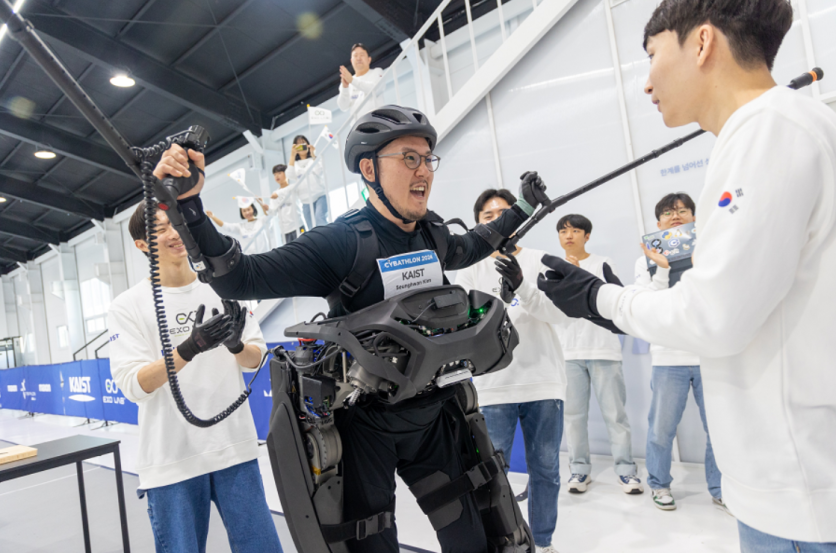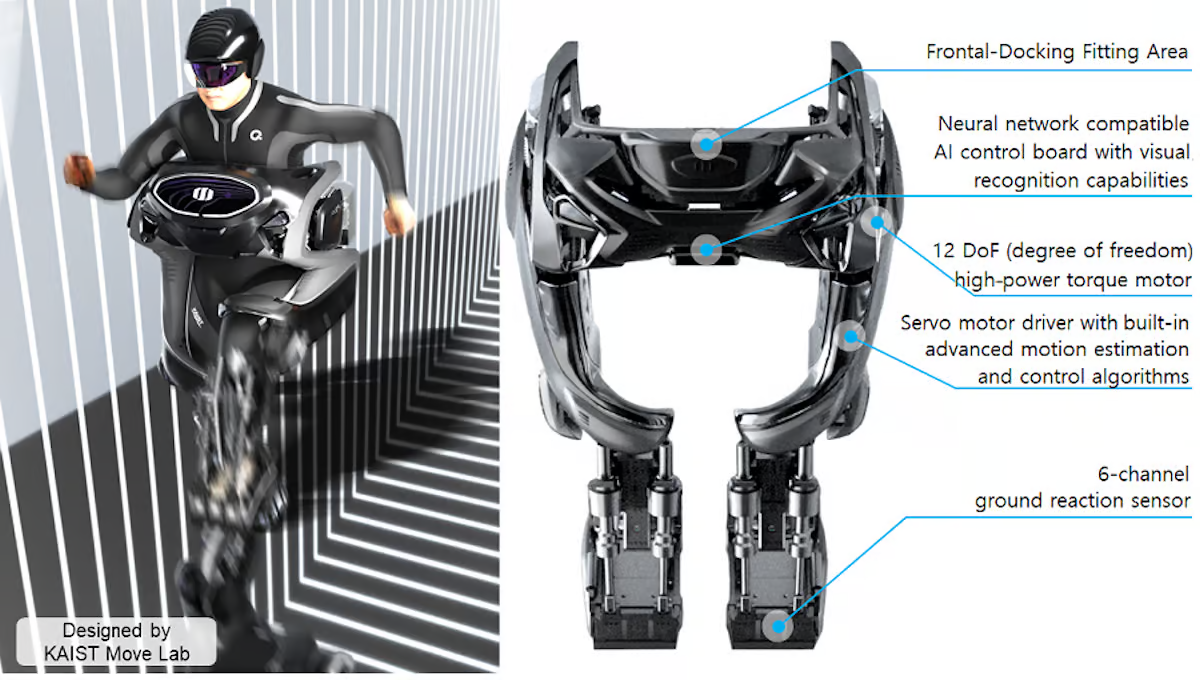Researchers in South Korea have created an innovative wearable robot designed to assist paraplegics in walking. This remarkable device, the WalkON Suit F1, can autonomously approach users in wheelchairs and attach itself, allowing them to stand, walk, navigate obstacles, and even climb stairs. Developed by the Exoskeleton Laboratory at the Korea Advanced Institute of Science and Technology (KAIST), the suit aims to integrate into the daily lives of individuals with disabilities seamlessly.

Kim Seung-hwan, a paraplegic member of the KAIST team, showcased the prototype, demonstrating its capabilities by walking at a speed of 3.2 kph (2 mph), ascending stairs, and maneuvering sideways to sit on a bench. He highlighted one of the suit’s standout features: its ability to approach users wherever they are seated and assist them in standing up.
The WalkON Suit F1 is made from lightweight materials, specifically aluminum and titanium, and has a total weight of just 50 kg (110 lb). It is powered by 12 electronic motors replicating human joint movements for a natural walking experience. To maintain balance while walking, the robot is equipped with sensors that monitor over 1,000 signals per second, anticipating the user’s intended movements.
Park Jeong-su, another member of the KAIST team, drew inspiration from the movie “Iron Man,” expressing his desire to create a robot that could genuinely help people. The robot also features advanced sensors that act like eyes, analyzing surroundings to detect obstacles and assess stair heights, thus compensating for sensory limitations faced by users with complete paraplegia.

In a significant achievement, Kim Seung-hwan won a gold medal while wearing the WalkON Suit F1 at Cybathlon 2024, an event showcasing assistive technologies for individuals with various disabilities. He shared his motivation for participating in this project, stating his wish to demonstrate to his son that he once could walk and to share diverse experiences with him.
Overall, the WalkON Suit F1 represents a groundbreaking advancement in assistive technology, providing newfound independence and mobility for those with disabilities.










